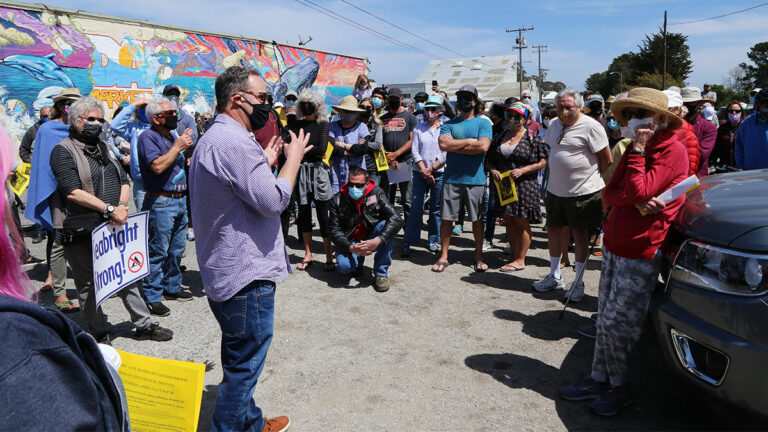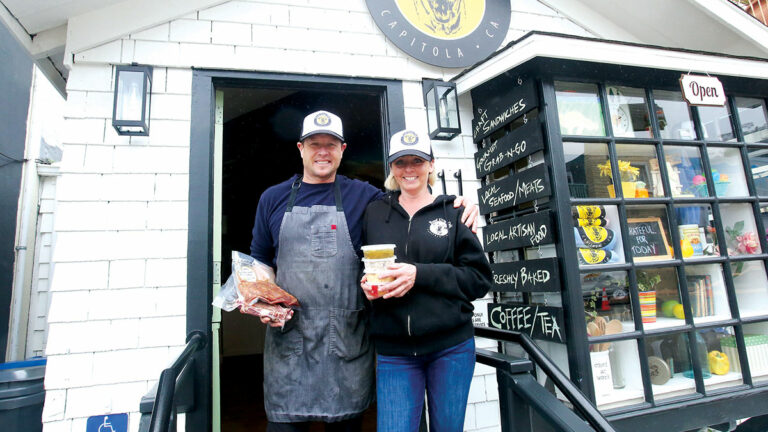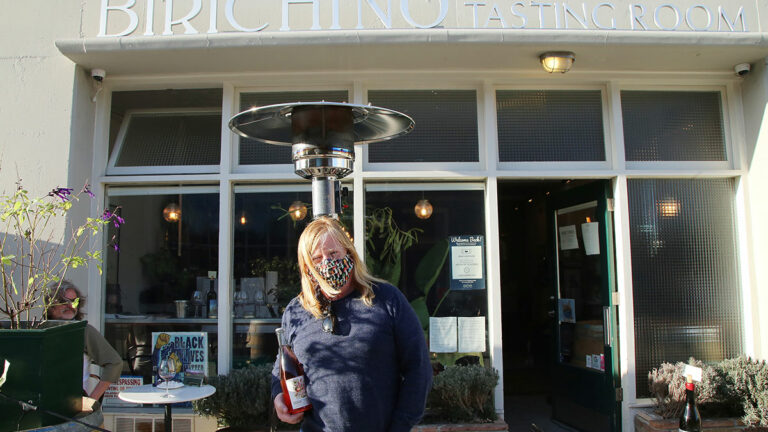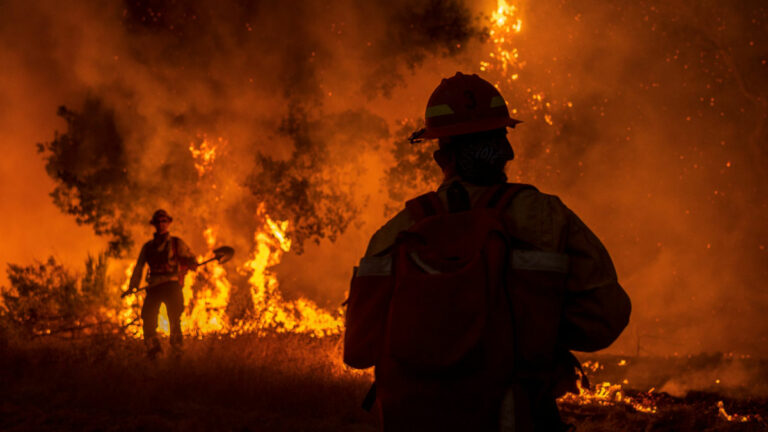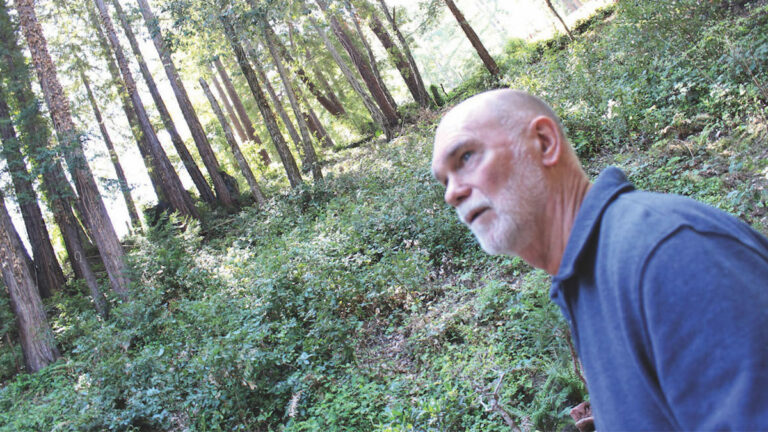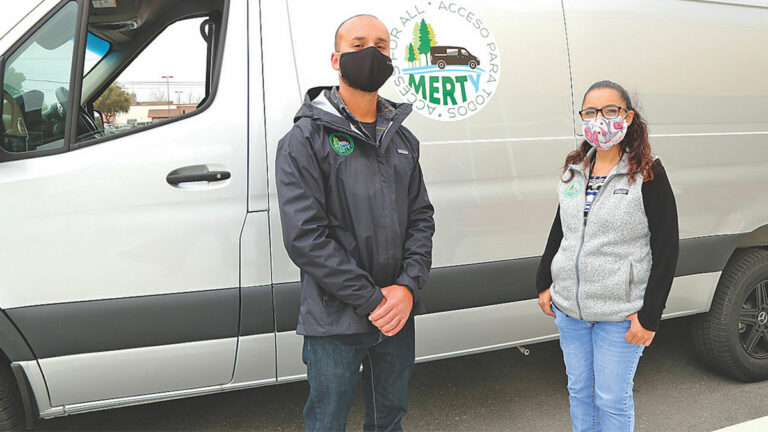By Jacob Pierce and Tarmo Hannula
Seabright resident Paige Concannon says that an influential neighborhood movement she helped create all started with a reflection about her community.
Concannon says she feels police response times have always been slower east of the San Lorenzo Rivermouth, and people in her community are scrappy and have always looked out for each other. “We’re strong,” she says.
That’s what gave her an idea.
In recent months, when Santa Cruz’s city staff laid out places for unsheltered Santa Cruzans to sleep at night as part of the Temporary Outdoor Living Ordinance (TOLO), they cordoned off much of the city as off-limits to camping. However, a sizable chunk of the area where unhoused residents would still be allowed to sleep was in Seabright. Residents in that neighborhood voiced opposition to the ordinance, many of them out of concern that an influx of campers would overrun the sidewalks and hurt businesses. Concannon, who was one of them, helped launch a campaign. She called it “Seabright Strong,” and friends started printing signs with that message on them.
Each sign showed a tent with a slash going through it.
“Seabright is saying to the City Council, ‘We’re strong; we’re gonna make you do your job, and we’re gonna keep hounding you until it’s done, because we are a gathered force,’” Concannon says.
Seabright residents ultimately convinced the Santa Cruz City Council to scrap the TOLO and head back to the drawing board to draft a new ordinance. Nonetheless, the “Seabright Strong” campaign gave a queasy feeling to some of Concannon’s neighbors.
Fellow Seabright resident Kelsey Hill opposed the TOLO for her own reasons. She worried less about the impacts on Seabright in particular and more about how she felt the ordinance—which would have banned camping citywide during the day—would be far too restrictive and too disruptive to the city’s unhoused residents.
Hill, a Democrat who ran unsuccessfully for the City Council in 2020, notes that slogans like “SLV Strong” or “San Bernardino Strong” normally crop up after a local trauma, like a terrorist attack or a natural disaster, not in response to a homelessness policy. Also, she says “Seabright Strong” implied a unified opposition to the TOLO for shared reasons, when the reality is more complex. More than anything, Hill, who works in communications, felt “Seabright Strong” sent a loud “othering” message, not just to the homeless people made to feel unwelcome on Seabright streets, but to the neighborhood’s progressives who criticized the ordinance for their own reasons.
Concannon, who ran for the City Council in 2016 as a Republican, knows her messaging got some pushback from critics. But she stands by it, saying that, at the end of the day, she and her neighbors achieved their goal.
“I understand some of them are like, ‘That’s kind of shitty,’” says Concannon, who works as a cook at St. Francis Soup Kitchen. “Believe me. I know that. But how else do you get the City Council to move?’”
The challenge now is how to move forward. Concannon says pretty much everyone she talks to is pressuring the council for a resolution.
“All the neighborhoods are coming together and saying, ‘You keep talking about this, and nothing changes, and now, we’re telling you, you have to change it now,’” she says. “Things have to change now. Not another focus group. None of that. Let’s fix it.”
Fixing a crisis, however, means different things to different people, especially when it comes to a topic as complex as homelessness—and in a town where oftentimes the only things more controversial than the status quo are the various solutions that city staffers, politicians and activists have thrown against the wall in recent years.
In scrapping the TOLO, the Santa Cruz City Council, on a 5-2 vote, has now given staff until May 11 to draft a revision to the ordinance.
Janice Bisgaard, a city spokesperson, says staff are on schedule to bring back a revised ordinance, along with implementation and engagement plans for the safe sleeping and storage programs, which they anticipate will be set up on city parking lots downtown. Staff are working on identifying sites, she says, and will be taking applications from potential service providers interested in partnering.
The downtown parking lot idea isn’t new. The council identified a lot on Washington Street for a safe sleeping zone two years ago, then threw the plan out rather promptly, due to neighborhood opposition. One year later, at the start of the Covid-19 pandemic, the city opened a camping zone at a different parking lot in the same area, only to close it within two days. Other local managed camps—like one that the county moved from the San Lorenzo Benchlands to DeLaveaga Park—have seen some success, however.
In Seabright, the issues stretch beyond homelessness, says resident Shelley Hatch, whose family bought a home in Santa Cruz in 1969 because they couldn’t afford a home in San Francisco.
Hatch, who helped organize meetings about the TOLO, says she’s still reeling from organizing around the successful effort a couple years ago to get the city to nix its plans to upzone corridors, like Soquel Avenue, for greater density of market-rate and affordable housing. If the city builds more housing, the influx of new cars would be too great for Santa Cruz roads to bear, she says, given many people like to drive and she doesn’t know how many people would want to ride bikes.
A former restaurant owner, Hatch says much of her concern around the TOLO was for businesses. The potential for sidewalk camping wrought by the hypothetical ordinance, she feels, would have dealt them a significant blow.
But homelessness is a regional and statewide crisis, she says, and one that merits regional and statewide solutions, a challenge that she hopes is now obvious to everyone.
And as for the options locally, none of them come easy, especially when critics lash out at any plan to let people sleep near neighborhoods, near businesses or in parks.
“I go on Nextdoor, and I see residents of a lot different areas say they’ve had it,” Hatch says. “I know people who live off Ocean Street have been unhappy for a long time. It’s big, and it’s going to get bigger. The haters are maybe starting to get the idea that it isn’t just a Santa Cruz problem.”


